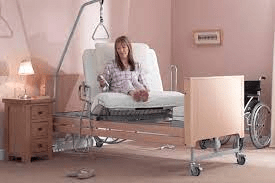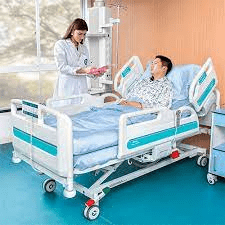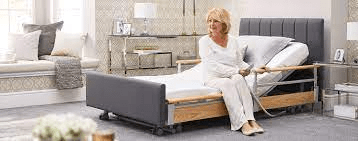The global population is ageing. As baby boomers transition into their senior years, the demand for carers and home beds has surged. However, while the need is apparent, the availability of quality care homes and beds to cater to this demographic remains a pressing concern. This blog post dives deep into the challenges surrounding care home bed availability and the potential solutions to address this escalating demand.
Understanding the Surge in Demand
Before diving into the intricacies, it’s vital to grasp the underpinnings of this rising demand:
- Ageing Population: With advancements in medical science, people are living longer. An increasing number of seniors require specialized care in their twilight years, leading to a spike in care home demand.
- Chronic Illnesses: The prevalence of chronic diseases like Alzheimer’s, Parkinson’s, and other age-related ailments necessitates professional care environments for many.
- Changing Family Dynamics: As modern life gets busier and more families have both parents working, the ability to care for elderly family members at home diminishes.
Challenges in Meeting the Demand
Despite the clear need for nursing more, several obstacles hinder the availability of care home beds:
- Insufficient Infrastructure: Many countries, especially those with rapidly ageing populations, lack the infrastructure to accommodate the growing number of seniors requiring care.
- Quality of Care Concerns: Even when beds are available, there’s no guarantee of the quality of care. Stories of neglect and substandard facilities taint the reputation of care homes.
- Economic Impediments: Building and maintaining care homes require significant investment. With tight budgets and competing demands, many governments struggle to allocate sufficient resources to this sector.
- Staffing Shortages: A care home is only as good as its staff. The sector often faces challenges in attracting and retaining qualified caregivers, nurses, and support staff.
Care Home Beds: Solutions on the Horizon
While the challenges are daunting, they’re not insurmountable. Several solutions could bridge the gap between demand and supply:
- Public-Private Partnerships (PPP): Collaborations between governments and private entities can lead to the rapid establishment of care homes. The private sector’s efficiency and innovation, combined with public oversight and funding, can create sustainable care environments.
- Community Care Models: Instead of traditional care homes, community care models focus on integrating seniors into community settings. These can be more cost-effective and foster better social connections.
- Technological Integration: The use of technology, from health monitoring systems to telemedicine, can reduce the burden on care home staff and ensure timely medical interventions.
- Training and Incentives: Offering competitive salaries, continuous training, and growth opportunities can attract more professionals to the care home industry.
- Flexible Care Models: Instead of one-size-fits-all, care homes can offer varied levels of care, from independent living with minimal oversight to intensive nursing care. This flexibility can cater to a broader range of seniors and their unique needs.
- Regulatory Overhauls: Streamlining the regulatory process for establishing and running care homes can accelerate growth in the sector. However, it’s crucial to balance efficiency with safeguards to ensure the well-being of residents.
The Role of Society and Culture
While infrastructure and policies play a critical role, societal attitudes towards ageing and elder care are equally significant. Recognizing seniors’ contributions, valuing their wisdom, and integrating them into daily societal life can reduce the stigma associated with care homes. As communities, we must ensure that our elders, who have given so much, receive the care, respect, and love they deserve in their golden years.
Role of Hospital Beds
A hospital bed is designed specifically for hospitalized patients or others in need of some form of health care. These beds have special features both for the comfort and well-being of the patient and for the convenience of health care workers.
Types of Hospital Beds
- General Beds: Used for standard patient care in hospitals.
- Intensive Care Beds: Equipped with advanced features for critically ill patients.
- Orthopedic Beds: Designed specifically for patients with skeletal disorders.
- Pediatric Beds: For children and often equipped with added safety features.
- Psychiatric Beds: For patients with severe mental health issues, usually featuring additional safety measures.
What are Electric Profiling Beds?
Electric profiling beds, often referred to as adjustable or hospital beds, are specially designed for both hospital settings and home care. Powered by electric motors, these beds can be adjusted in various positions to enhance patient comfort, aid in specific treatments, transport and assist caregivers in their tasks.
Benefits of Electric Profiling Beds
- Enhanced Comfort: Multiple adjustment options ensure that patients can find the most comfortable position, vital for those who are bedridden for extended periods.
- Injury Prevention: For patients with mobility challenges, these beds reduce the risk of pressure sores and aid in circulation.
- Caregiver Assistance: Adjusting the bed height can prevent strain injuries among caregivers and medical staff. The ease of changing a patient’s position also reduces the physical burden.
- Versatility: With various positioning options, these beds can assist with respiratory conditions, post-surgery recovery, and more.
- Independence: For patients with some mobility, electric profiling beds allow them to adjust their position without always relying on a caregiver.
What is a Medical Bed?
A medical bed is a bed specially designed for individuals in need of healthcare, either at a hospital, care facility, or at home. Beyond providing users a place for rest, they are engineered to enhance patient safety, comfort, and therapeutic needs.
Types of Medical Beds
Medical beds can be categorized based on their purpose and the kind of delivery of care they facilitate:
- Manual Hospital Bed: These require physical strength to adjust bed positioning using hand cranks.
- Electric Hospital Bed: As the name suggests, these beds use electrical controls to adjust various positions.
- ICU (Intensive Care Unit) Beds: Designed for critical care, these beds usually come with advanced features, including cardiac chairs and continuous patient monitoring.
- Pediatric Hospital Beds: Specifically for children, they often come with added safety features and child-friendly designs.
- Orthopedic Beds: Designed to ensure optimal positioning after orthopedic surgeries.
- Low Beds: Ideal for patients at risk of falling, these beds sit much closer to the ground.
Importance of Medical Beds in Patient Care
- Comfort: Proper positioning can significantly affect a patient’s comfort, especially when bedridden for extended periods.
- Safety: Features like safety rails and bed exit alarms reduce risks of patient injuries.
- Enhanced Recovery: The right bed can aid in faster recovery, provide relief from symptoms, and improve overall well-being.
- Facilitation of Medical Procedures: Some beds are designed to support specific medical procedures, treatments, or surgeries.
What is a Pressure Mattress?
A pressure mattress, often known as an anti-decubitus or therapeutic mattress, is specifically designed to prevent or reduce the risk of pressure ulcers. Made with specialized materials and structures, these mattresses redistribute pressure from areas like the hips, heels, and elbows to the body over a broader surface.
What is a Bariatric Beds
A bariatric bed is a specially designed medical bed to accommodate and care for larger or obese patients. It is built to be sturdier and more spacious than standard medical beds, ensuring it can support a person of greater weight and provide ample space for the patient’s comfort.
Comprehensive Range in Business
In the business world, offering customers a comprehensive range demonstrates a commitment to catering to diverse customer needs:
- Products: A brand boasting a comprehensive range of products might offer multiple variations, sizes, colors, or functionalities of a particular item.
- Services: Service-based businesses might provide an array of offerings to cater to different client requirements, budgets, and scenarios.
Advantages of Offering a Comprehensive Range
- Attracting a Wider Audience: By offering more, businesses can appeal to a broader demographic, enhancing their market reach.
- Flexibility: Companies can pivot and prioritize based on market demand, trends, or feedback.
- Building Reputation: Having a comprehensive range showcases expertise, dedication, and a commitment to customer satisfaction.
- Economic Stability: A diverse range can buffer against economic fluctuations. If one product or service falters in sales, others can compensate.
Provide Optimum Comfort
Optimum comfort refers to a state where an individual’s physical, emotional, and psychological needs are addressed to the best degree possible, ensuring well-being and contentment. It’s not just about luxury or indulgence but about creating an environment or state where stressors are minimized and well-being is prioritized.
The Balance Between Comfort and Growth
While comfort is essential, it’s also crucial to note that constant comfort can lead to stagnation. It’s often when we step out of our comfort zones that we grow and learn. The key is to strike a balance — ensuring a comfortable foundation while also embracing opportunities that challenge and expand our horizons.
Conclusion
The demand for care home beds and nursing homes isn’t a transient issue. It’s a long-term challenge that requires foresight, innovation, collaboration, and compassion. By understanding the complexities and proactively seeking solutions, we can create a world where every senior has access to quality care, dignity, and a sense of belonging. As the saying goes, a society’s greatness is measured by how it treats its weakest members. Ensuring quality care for our elderly is not just a logistical challenge but a moral imperative.


